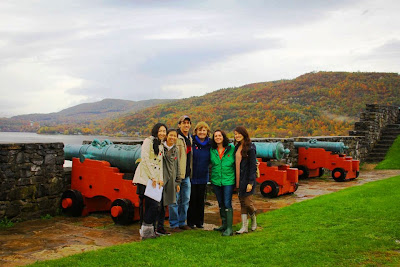Fort Ticonderoga is introducing a Fort Fever Series of Sunday afternoon programs running from January through April. Presented by Fort Ticonderoga staff, the programs cost $10 each and are free for Members of the Friends of Fort Ticonderoga.
The program begins with a “Winter Landscape Snowshoe Trek” led by Curator of Landscape Heidi Karkoski on January 22. Explore the Fort Ticonderoga grounds and learn how to identify trees based on their winter (leaf-less) characteristics. Bring your own snowshoes (or hiking boots if conditions require).
On February 12, Curator of Collections Chris Fox will give attendees the chance to examine several original 18th-cenutry weapons from the Fort’s extensive collection in a program titled “The Roar of Musketry and the Cracking of Rifles: An Introduction to the Weapons of the 18th Century.”
In “Native Americans and the Patriot Cause” on March 25, Director of Interpretation Stuart Lilie will discuss the roles of Native groups that sided with the colonists during the American Revolution.
On April 22, Director of Education Rich Strum will talk about “Henry Knox: Beyond the Noble Train of Artillery.” Learn about the fascinating life of Henry Knox, from his first job in a book shop at age nine through his Revolutionary War career to his role as the nation’s first Secretary of War.
The Fort Fever Series is one of several new education initiatives at Fort Ticonderoga in 2012. You can learn more about these new programs, including Material Matters Seminar, the Garden & Landscape Symposium, and the Conference on Lake George & Lake Champlain, by visiting the Fort’s website at www.Fort-Ticonderoga.org and selecting the “Explore and Learn” button.
Photo: Fort Ticonderoga volunteer BR Delaney portrays a North East Woodland Native at a recent Fort Ticonderoga event (courtesy George Jones).

